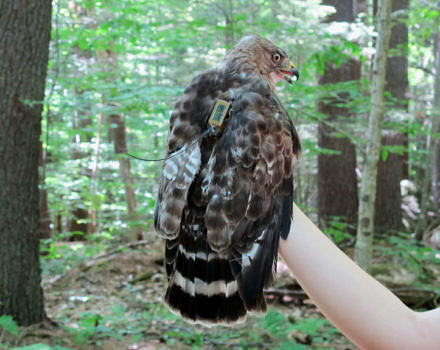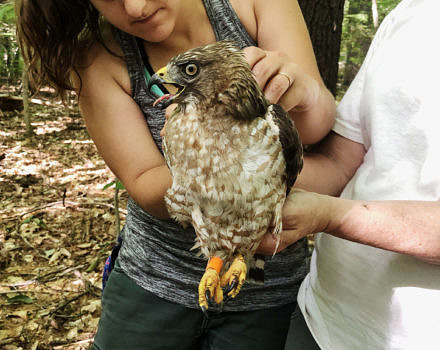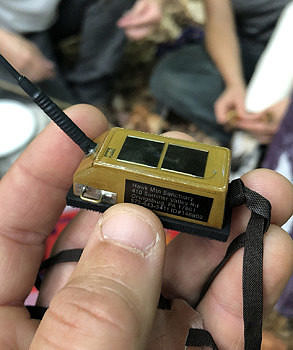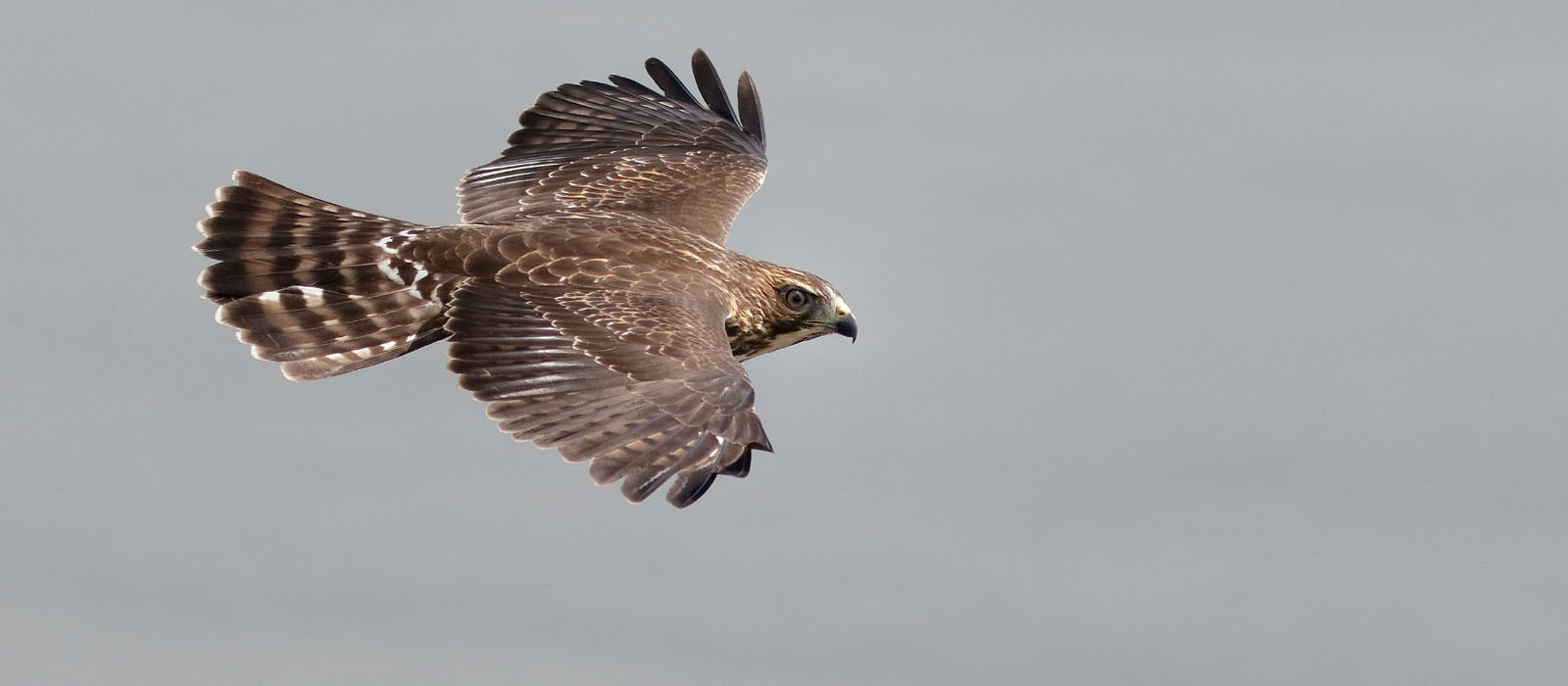Tracking the Broad-winged Hawk Migration
The Harris Center is partnering with Hawk Mountain Sanctuary in Pennsylvania on a project to better understand Broad-winged Hawk ecology by tracking the migration of hawks breeding in New Hampshire to their wintering grounds in South America and back.
In the project’s inaugural field season in 2021, Hawk Mountain biologists affixed lightweight transmitters to three adult Broad-winged Hawks in and around the Harris Center’s SuperSanctuary of protected lands — the first of this species to ever be satellite-tagged in the Granite State — and color-banded two additional hawks. The two Broad-wingeds outfitted with satellite transmitters were named “Harris” (a male) and “Monadnock” (a female). “Thelma,” a female named after longtime local conservation hero Thelma Babbitt, was tagged with a cellular transmitter.
In the summer of 2022, the team successfully affixed satellite transmitters to two additional female Broad-winged Hawks — one on Dublin School land and another on Harris Center-conserved land near Willard Pond Road — and color-banded one male bird. The Dublin female was named “Skatutakee,” an Abenaki word meaning “of land and fire.” The Willard hawk was named “Nubanusit,” meaning “wing-shaped.” Both names also pay tribute to special places in the SuperSanctuary: Lake Nubanusit in Hancock and Nelson, and Skatutakee Mountain in Hancock.
Each of these birds stands to generate considerable information about the life histories of Broad-winged Hawks in New England and how they travel across multiple continents.
"Monadnock" — a female Broad-winged Hawk tagged in Dublin, New Hampshire in June 2021 — shows off her new satelitte transmitter. (photo © Brett Amy Thelen)

Rebecca McCabe and Dr. Laurie Goodrich of Hawk Mountain Sanctuary carefully affix a satellite transmitter to "Monadnock." (photo © Brett Amy Thelen)

In conjunction with the tagging, Harris Center staff and volunteers monitored eight Broad-winged Hawk nests in 2021 and seven nests in 2022, a number of which were on Harris Center-conserved properties.
The transmitters and associated monitoring aim to provide detailed information about habitat selection and geographic preferences of these birds in their breeding habitat, along their migration routes and, especially, on their wintering grounds, where much less is known. Following the movements of these birds will also help researchers compare migration and overwintering patterns between hawks breeding in Pennsylvania and hawks breeding in New England and eastern Canada. Where possible, these data will be used to inform conservation and management decisions, such as the protection of significant migration stopover sites.
A close-up view of a transmitter. (photo © Phil Brown)

Hawk Watch Coordinator Phil Brown prepares to release a Broad-winged Hawk — which was tagged on Harris Center-conserved land in Hancock in June 2021 — back to the wild. (photo © Chad Witko)

A juvenile Broad-winged Hawk in one of eight nests monitored by Harris Center staff and volunteers in the summer of 2021. (photo © Phil Brown)

Where Are They Now?
You can follow along with the movements of the tagged hawks via the “live map” link on Hawk Mountain’s “Meet the Bird” page. Note: In order to protect the sensitive locations where tagged birds are nesting during the summer months, the maps are only live from fall through early spring.
Contact Us
For more information on the Harris Center’s work with the Broad-winged Hawk Project, please contact Phil Brown by email.


